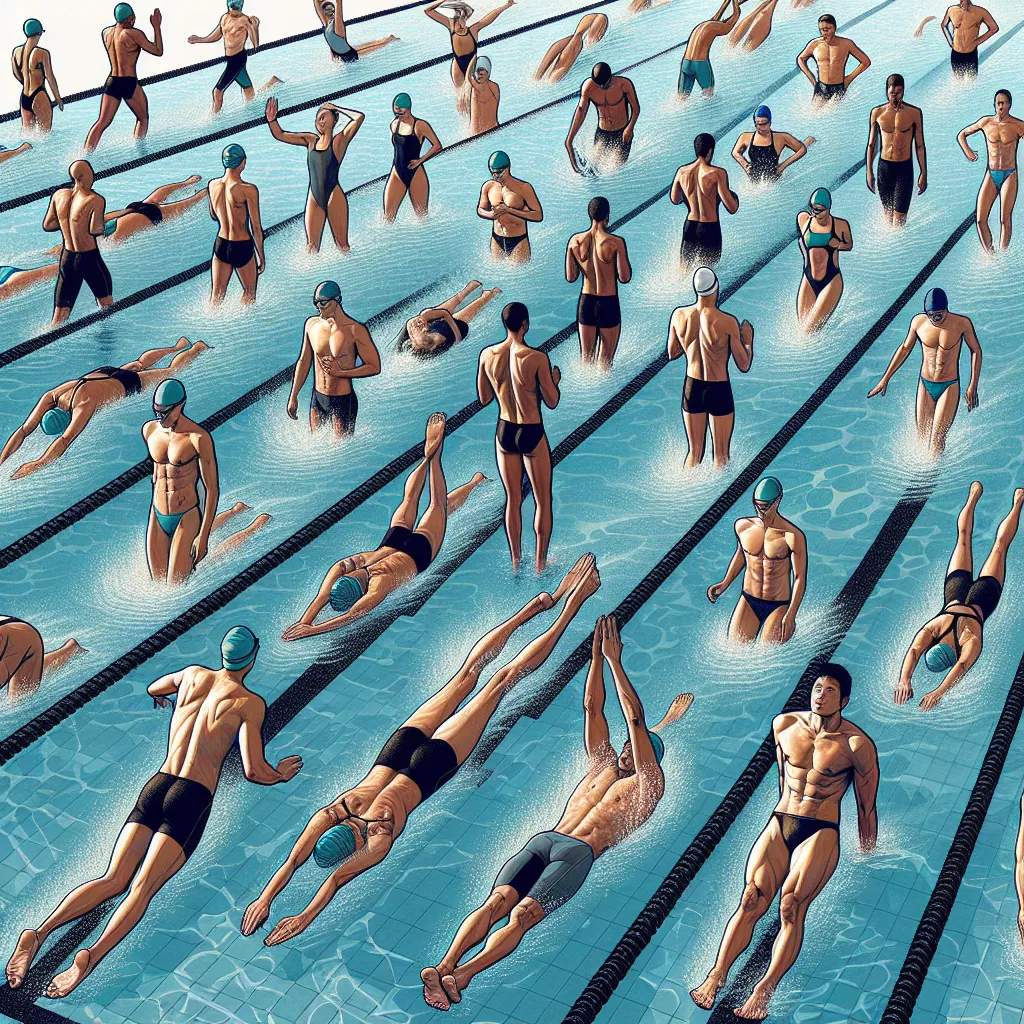Swimming drills are essential exercises that help swimmers improve their technique, efficiency, and overall performance in the water. As an IELTS candidate, understanding and using this terminology correctly can significantly enhance your vocabulary and score in the exam. Let’s dive into the world of swimming drills and explore how you can incorporate this language into your IELTS preparation.
Understanding Swimming Drills
Swimming drills, pronounced /ˈswɪmɪŋ drɪlz/, are specific exercises designed to isolate and improve particular aspects of a swimmer’s technique. These drills are typically performed as part of a structured training session and can focus on various elements such as stroke mechanics, breathing, body position, and propulsion.
Context and Usage
-
Training sessions: “The coach incorporated several swimming drills into today’s practice to help the team refine their freestyle technique.”
-
Technique improvement: “By regularly performing swimming drills, Sarah was able to significantly improve her butterfly stroke efficiency.”
-
Competition preparation: “Leading up to the national championships, the swimmers spent extra time on swimming drills to perfect their starts and turns.”
-
Injury rehabilitation: “After recovering from a shoulder injury, Tom’s physiotherapist recommended specific swimming drills to gradually rebuild his strength and technique.”
-
Fitness routines: “Many triathletes incorporate swimming drills into their training to enhance their performance in the water segment of the race.”
In these examples, we can see how the term “swimming drills” is used in various contexts related to training, improvement, competition, rehabilitation, and cross-training. This versatility makes it a valuable term to understand and use in IELTS speaking and writing tasks, particularly when discussing sports, fitness, or personal development topics.

Frequency in IELTS
While “swimming drills” may not be a high-frequency term in IELTS exams, it can be particularly useful in certain contexts:
- Speaking Part 2: When describing a sport or hobby you enjoy, or discussing fitness routines.
- Writing Task 2: In essays about health, sports, or personal development.
- Reading: In passages about sports science, training methods, or athlete biographies.
Understanding this term and related vocabulary can help you express ideas more precisely and demonstrate a wider range of language in the IELTS test.
Vocabulary Analysis
Word Structure
- Swimming: A gerund form of the verb “swim,” used here as an adjective.
- Drills: A plural noun, often used in sports and training contexts to describe repetitive exercises.
Synonyms and Related Terms
- Synonyms: Swimming exercises, aquatic training routines, stroke practice
- Related terms: Stroke technique, water workouts, swim training, pool exercises
Understanding these related terms can help you vary your language in the IELTS exam, demonstrating a broader vocabulary range.
Memorization Techniques
Mind Mapping
Create a mind map with “swimming drills” at the center, branching out to different types of drills, benefits, and contexts where they’re used. This visual representation can help you quickly recall related vocabulary during the IELTS test.
Storytelling Method
Imagine a narrative about a swimmer preparing for an important competition. Incorporate various swimming drills into their training routine, describing how each drill helps improve specific aspects of their performance. This story can serve as a memory aid during the exam.
Practical Application in IELTS
Speaking Task Example
Examiner: “Describe a sport you enjoy watching or participating in.”
Sample answer: “One sport I find fascinating is swimming. I particularly enjoy watching competitive swimming events and learning about the training methods athletes use. Swimming drills play a crucial role in a swimmer’s preparation. These specialized exercises help athletes refine their technique and improve efficiency in the water. For instance, catch-up drills in freestyle swimming help swimmers perfect their arm movements and timing. By incorporating various swimming drills into their training regimen, athletes can enhance their performance significantly. This attention to detail in training is what makes swimming such an exciting sport to follow.”
Writing Task 2 Example
Question: “Some people believe that competitive sports teach important life lessons. Do you agree or disagree?”
Sample paragraph: “Competitive sports, such as swimming, offer valuable life lessons that extend far beyond the pool or playing field. For instance, the discipline required to consistently practice swimming drills teaches athletes the importance of dedication and perseverance. These repetitive exercises, designed to improve specific aspects of a swimmer’s technique, may seem tedious at first. However, the gradual improvement that results from this focused practice demonstrates the power of consistent effort in achieving long-term goals. This lesson in persistence can be applied to many areas of life, from academic pursuits to professional development.”
Conclusion
Mastering terms like “swimming drills” can significantly enhance your IELTS performance by allowing you to express ideas more precisely and demonstrate a broader vocabulary range. Remember to practice using this term in context, perhaps by discussing your own experiences with sports training or by incorporating it into practice essays and speaking exercises.
We encourage you to share your experiences with learning and using sports-related vocabulary in the comments below. How have you incorporated terms like “swimming drills” into your IELTS preparation? Do you have any questions about using this vocabulary effectively in the exam?
For more insights on sports-related vocabulary and IELTS preparation, check out our articles on sports drills and describing athletes.